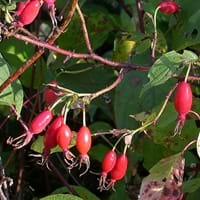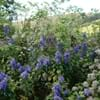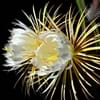Life Span
Perennial
Perennial
Type
Flowering Plants
Flowering Plants, Houseplant, Shrub
Origin
Not Available
Hybrid origin
Types
Aconitum napellus
Not Available
Number of Varieties
Not Available
Habitat
Damp shady woods, meadows
gardens
USDA Hardiness Zone
12-15
3-10
AHS Heat Zone
12-10
Not Available
Sunset Zone
21, 22, 23, 24
Not Available
Habit
Oval or Rounded
Upright/Erect
Minimum Height
Not Available
Minimum Width
Not Available
Flower Color
Yellow
White
Flower Color Modifier
Not Available
Not Available
Fruit Color
Green
Not Available
Leaf Color in Spring
Not Available
Dark Green
Leaf Color in Summer
Not Available
Dark Green
Leaf Color in Fall
Not Available
Dark Green
Leaf Color in Winter
Not Available
Not Available
Leaf Shape
Compound
Pinnate
Plant Season
Not Available
Late Summer, Mid Summer, Summer
Sunlight
Not Available
Full Sun, Partial Sun
Growth Rate
Very Slow
Medium
Type of Soil
Not Available
Clay, Loam, Sandy
The pH of Soil
Not Available
Neutral, Slightly Acidic, Slightly Alkaline
Soil Drainage
Not Available
Well drained
Bloom Time
Spring
Late Summer, Mid Summer, Summer
Repeat Bloomer
Not Available
Yes
Tolerances
Not Available
Wet Site
Where to Plant?
Ground
Ground, Pot
How to Plant?
reseeds
Seedlings, Stem Planting
Plant Maintenance
Medium
Medium
Watering Requirements
Do not let dry out between waterings
Requires a lot of watering, Requires regular watering
In Summer
Lots of watering
Lots of watering
In Spring
Moderate
Moderate
In Winter
Average Water
Average Water
Soil pH
Not Available
Neutral, Slightly Acidic, Slightly Alkaline
Soil Type
Not Available
Clay, Loam, Sand
Soil Drainage Capacity
Not Available
Well drained
Sun Exposure
Not Available
Full Sun, Partial Sun
Pruning
Remove damaged leaves, Remove dead branches, Remove dead leaves
cut main flower spike, Prune in spring, Remove dead leaves, Remove deadheads
Fertilizers
All-Purpose Liquid Fertilizer
5-10-10 fertilizer
Pests and Diseases
Red blotch
Aphids, Black Spot, Japanese Beetles, Powdery mildew, Spider mites
Plant Tolerance
Drought
Wet Site
Flowers
Not Available
Yes
Flower Petal Number
Single
Double
Fragrant Flower
Not Available
Yes
Fragrant Fruit
Not Available
No
Fragrant Leaf
Not Available
No
Fragrant Bark/Stem
Not Available
No
Showy Foliage
Not Available
No
Showy Bark
Not Available
No
Foliage Texture
Bold
Not Available
Foliage Sheen
Not Available
Matte
Invasive
Not Available
Yes
Self-Sowing
Not Available
No
Attracts
Hummingbirds
Bugs
Allergy
poisonous if ingested, Toxic
Asthma, contact allergic dermatitis, Rhinoconjunctivitis
Aesthetic Uses
Not Used For Aesthetic Purpose
Borders, Bouquets, Showy Purposes
Beauty Benefits
Not Available
good for lips, Improve skin tone, Moisturizing, Speed hair growth
Environmental Uses
Air purification
Air purification
Medicinal Uses
Analgesic, Anodyne, Diaphoretic, Homeopathy, Used as a sedative
anti-inflammatory, Antiseptic, Asthma, Dehydration, Dermatitis, Eczema, Eye Problems, Fatigue, Gallbladder Diseases, Liver problems, Sore throat, Stomach aliments, Swelling, Ulcers, Urinary tract problems
Part of Plant Used
Root
Flowers
Other Uses
Not Available
Can be made into a herbal tea, Cosmetics, Culinary use, Edible syrup, Making Sweet Scented Oil, Oil is used for aromatherapy, Used as essential oil, Used as Ornamental plant, Used for fragrance, Used for its medicinal properties
Used As Indoor Plant
No
Yes
Used As Outdoor Plant
Yes
Yes
Garden Design
Not Available
Container, Feature Plant, Foundation, Groundcover, Mixed Border, Rock Garden / Wall, Topiary / Bonsai / Espalier
Botanical Name
Aconitum
Rosa acicularis
Common Name
aconite, monkshood, wolf's bane, leopard's bane, mousebane, women's bane, devil's helmet, Queen of all Poisons, blue rocket
prickly wild rose, the prickly rose, the bristly rose, Arctic rose
In Hindi
बच्छनाभ
कांटेदार गुलाब
In German
Eisenhut
Nadel-Rose
In French
Queen of all Poisons
rosier arctique
In Spanish
Queen of all Poisons
rosa espinosa
In Greek
Queen of all Poisons
φραγκοσυκιές τριαντάφυλλο
In Portuguese
Queen of all Poisons
rosa espinhoso
In Polish
Tojad
kolczasta róża
In Latin
Queen of all Poisons
spinis rosa
Phylum
Tracheobionta
Magnoliophyta
Class
Magnoliopsida
Magnoliopsida
Order
Ranunculales
Rosales
Family
Cactaceae
Rosaceae
Clade
Angiosperms, Eudicots
Angiosperms, Eudicots, Rosids
Tribe
Delphinieae
Not Available
Subfamily
Not Available
Rosoideae
Importance of Queen of all Poisons and Prickly Rose
Want to have the most appropriate plant for your garden? You might want to know the importance of Queen of all Poisons and Prickly Rose. Basically, these two plants vary in many aspects. Compare Queen of all Poisons and Prickly Rose as they differ in many characteristics such as their life, care, benefits, facts, etc. Every gardener must at least have the slightest clue about the plants he wants to plant in his garden. Compare their benefits, which differ in many ways like facts and uses. The medicinal use of Queen of all Poisons is Analgesic, Anodyne, Diaphoretic, Homeopathy and Used as a sedative whereas of Prickly Rose is anti-inflammatory, Antiseptic, Asthma, Dehydration, Dermatitis, Eczema, Eye Problems, Fatigue, Gallbladder Diseases, Liver problems, Sore throat, Stomach aliments, Swelling, Ulcers and Urinary tract problems. Queen of all Poisons has beauty benefits as follows: Not Available while Prickly Rose has beauty benefits as follows: Not Available.
Compare Facts of Queen of all Poisons vs Prickly Rose
How to choose the best garden plant for your garden depending upon its facts? Here garden plant comparison will help you to solve this query. Compare the facts of Queen of all Poisons vs Prickly Rose and know which one to choose. As garden plants have benefits and other uses, allergy is also a major drawback of plants for some people. Allergic reactions of Queen of all Poisons are poisonous if ingested and Toxic whereas of Prickly Rose have Asthma, contact allergic dermatitis and Rhinoconjunctivitis respectively. Having a fruit bearing plant in your garden can be a plus point of your garden. Queen of all Poisons has no showy fruits and Prickly Rose has no showy fruits. Also Queen of all Poisons is not flowering and Prickly Rose is flowering. You can compare Queen of all Poisons and Prickly Rose facts and facts of other plants too.





